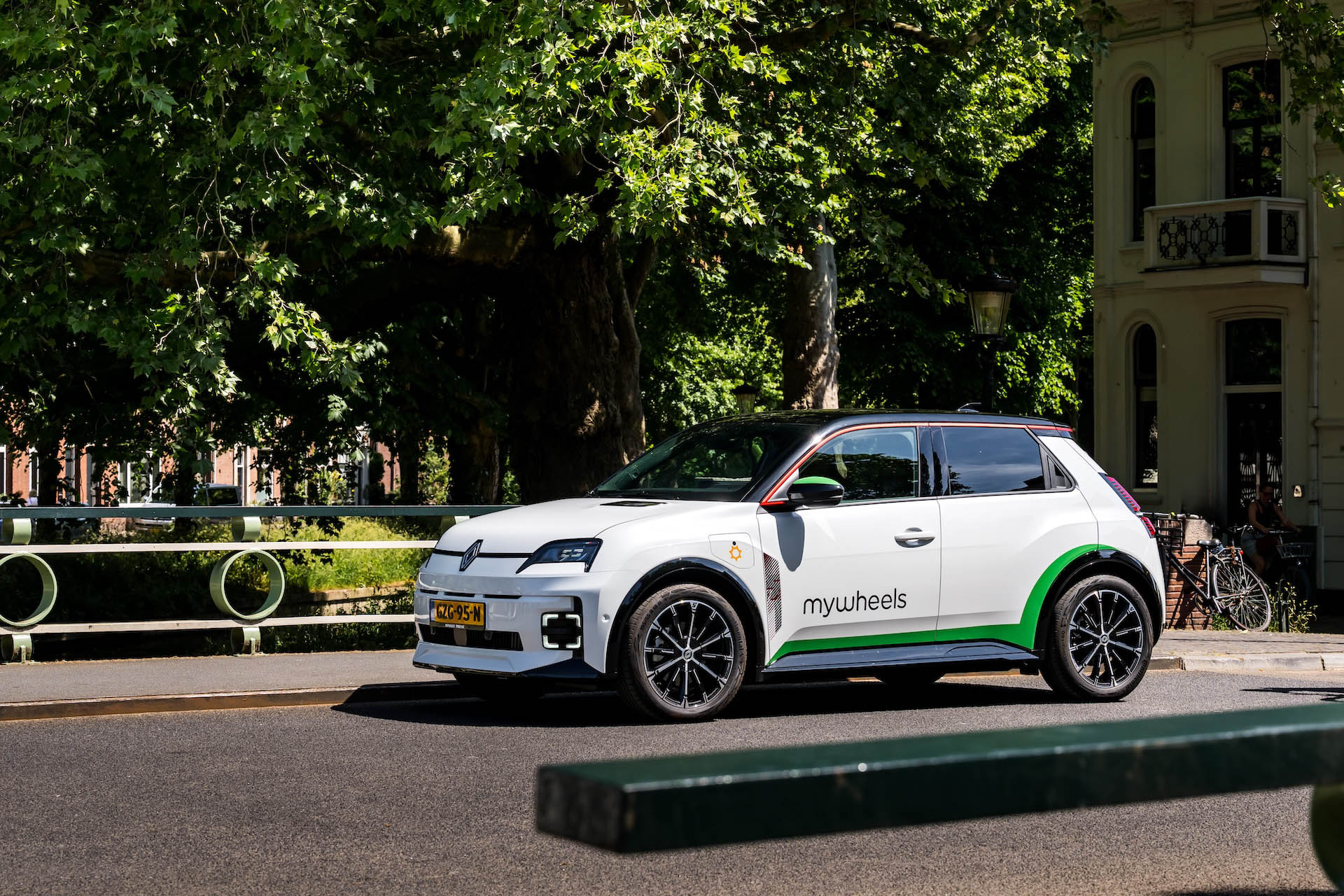Driving neighborhood batteries for transportation and power supply
It is a project of Renault, part-car service MyWheels and We Drive Solar in cooperation with the municipality of Utrecht. It is unique because it is Europe’s first large-scale Vehicle-to-Grid (V2G) partial service, called Utrecht Energized. The initiative contributes to a more sustainable and efficient energy system in a city where 35% of the roofs are already covered with solar panels.
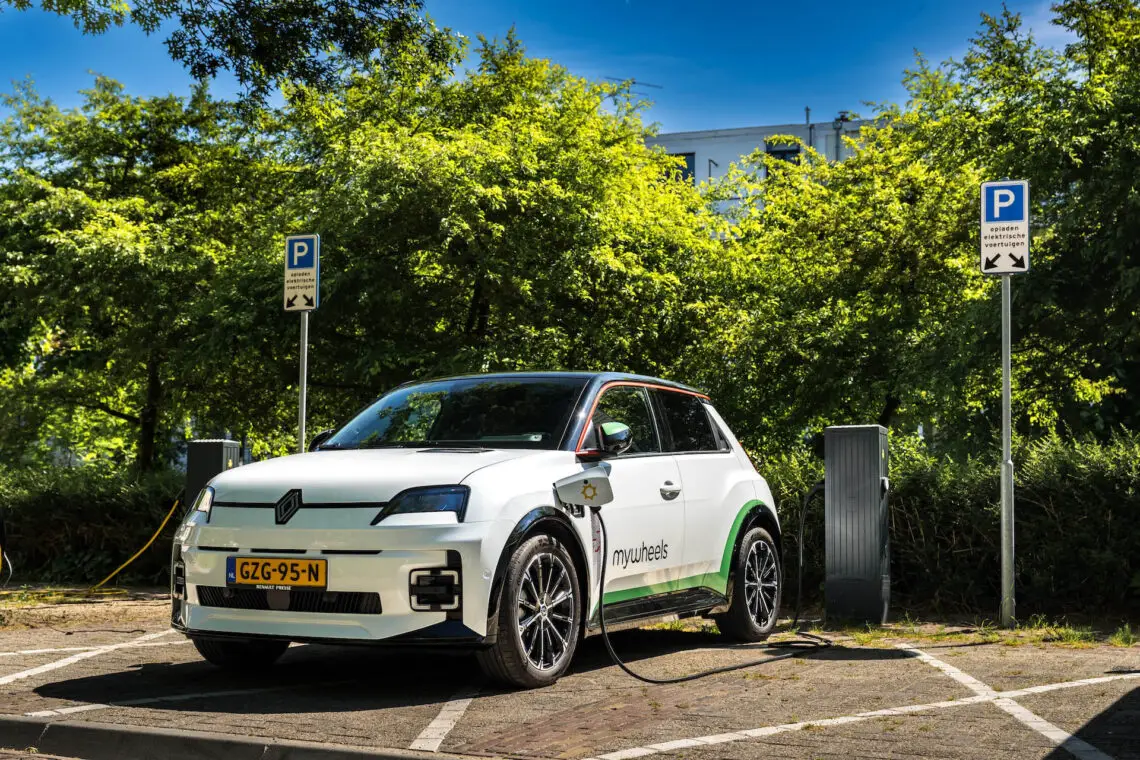
Store and deliver power
The arrival of this share car service using V2G technology was announced in November 2024. This initiative is a step towards cleaner mobility by betting on large-scale availability of electric shared cars with bi-directional charging technology to balance the electricity grid in the city of Utrecht.
Renault and We Drive Solar
“We are directly contributing to reducing power grid congestion in Utrecht with our technology,” said Robin Berg, director of We Drive Solar. He has been using solar energy to charge electric cars for more than 15 years. Gradually he came to the idea that those electric cars could play a crucial role in relieving the congested power grid.
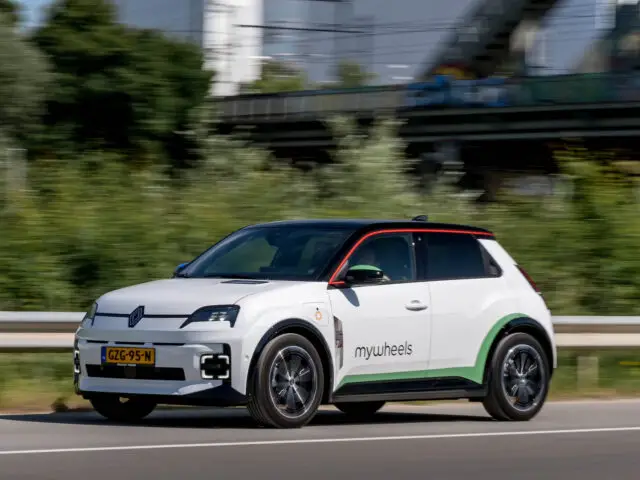
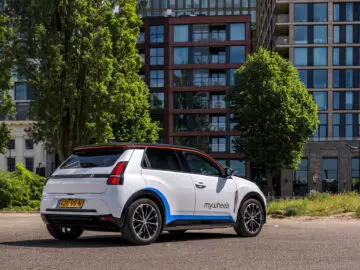

Pilot with Renault ZOE
In 2016, an agreement was signed with Renault Group in Paris to explore the possibilities with two-way charging. It led to the 2019 pilot with the Renault Zoe in the city of Utrecht. Berg: “Due to the increasing demand for charging stations suitable for the energy system of the future, we are collaborating with Koolen Industries, Kees Koolen’s investment group. The development, production and delivery of bi-directional charging solutions takes place in Hengelo under the company name We Drive Solar.”
Scalable charging station
The bidirectional ysystem of Renault Group, We Drive Solar and MyWheels. Berg: “Solar energy is available in ever-increasing quantities, at the same time we also want to relieve the burden on the grid because it is increasingly congested. V2G technology is a smart and efficient solution. For at least ten years several parties have been trying to deploy the technology on a small scale, but no one has yet succeeded in developing a scalable concept. Together with Renault Group, they have now succeeded. Renault Group has integrated the technology into an affordable car and We Drive Solar has invested in a scalable charging station.”
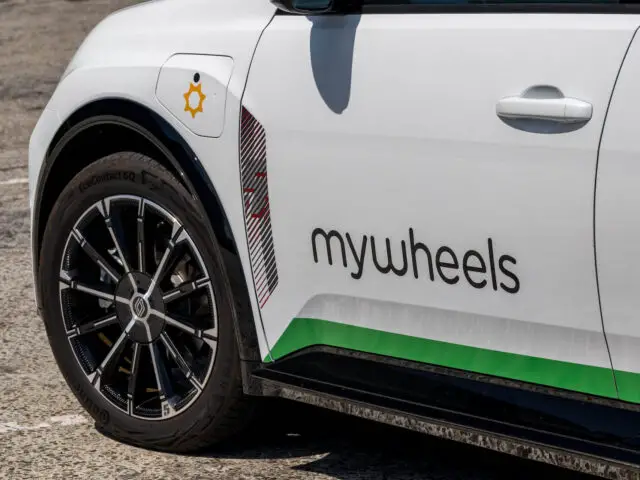


Earnings model
Because shared cars work with reservations, MyWheels knows exactly when an electric car needs to be fully charged. Charging and feeding back is thus easy to plan. For each charging station, We Drive Solar has a dynamic energy contract. If there is a lot of wind at night or a lot of sun during the day, the electricity may cost only a few cents per kWh or even be free. In the evening when demand is high, the electricity price rises. Then feed-in is interesting. The difference is the revenue model. For the grid operator, the result is the reduction of grid congestion at peak times.
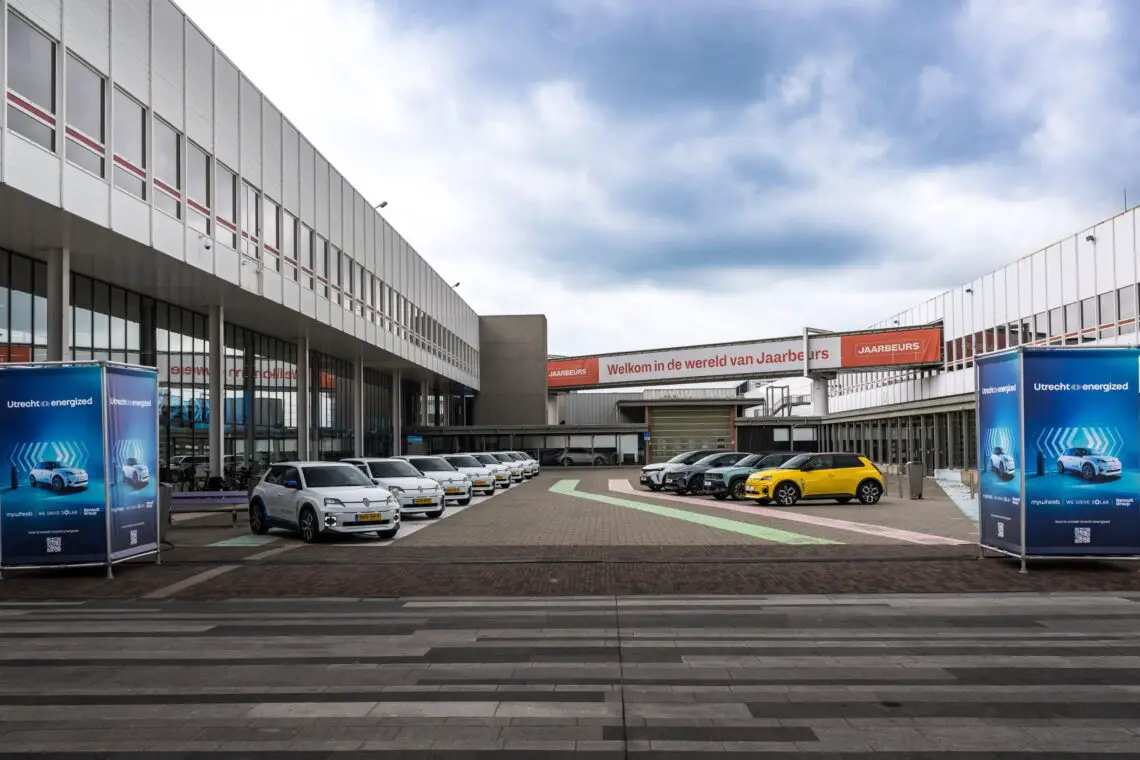
Overcrowded power grid
The Utrecht region in particular has one of the most congested power grids in the Netherlands. Therefore, the city has also been chosen to kick off the share car service with electric cars and V2G technology. Immediately, 50 electric Renaults 5 are available. That number will grow to 500 in the course of this year, which can relieve the grid with 5 megawatts. However, the capacity deficit in the Utrecht region amounts to 250 megawatts at peak times.
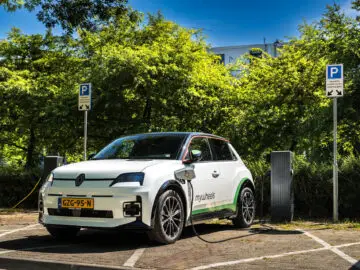
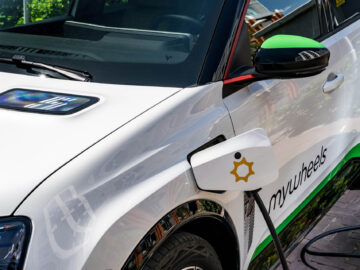
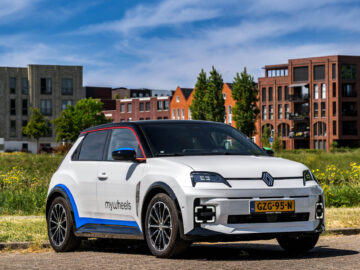
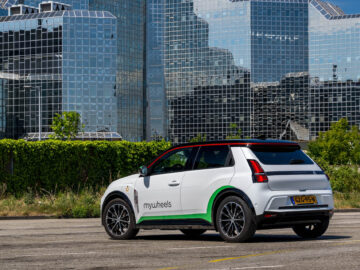
Powering all of the Netherlands
Scaling up is important now. “We have calculated that 1.5 million two-way EVs are needed to power all of the Netherlands. If you use solar power and wind power for that, we will have a sustainable energy system. Then coal and gas power plants are no longer needed. Electric cars are now also a buffer to relieve peaks on the power grid. This simultaneously takes the pressure off network operators, who cannot expand the network everywhere at once in the short term. They lack sufficient money, people and equipment to do so. That expansion of the grid remains necessary. With bi-directional charging systems on a large scale, the pressure is off.”
Share cars from MyWheels
MyWheels, the largest share car platform in the Netherlands, will manage the fleet of electric Renault models. Laurens van de Vijver, CEO MyWheels: “The driving neighborhood batteries will almost always be in use as a means of transportation or energy source, by everyone in the neighborhood, while private vehicles 97% of the time just take up space. Utrecht is the first city where shared mobility and energy supply actually merge. This initiative shows what is possible when cities, businesses and citizens work together. It is an example of European innovation at its best.”
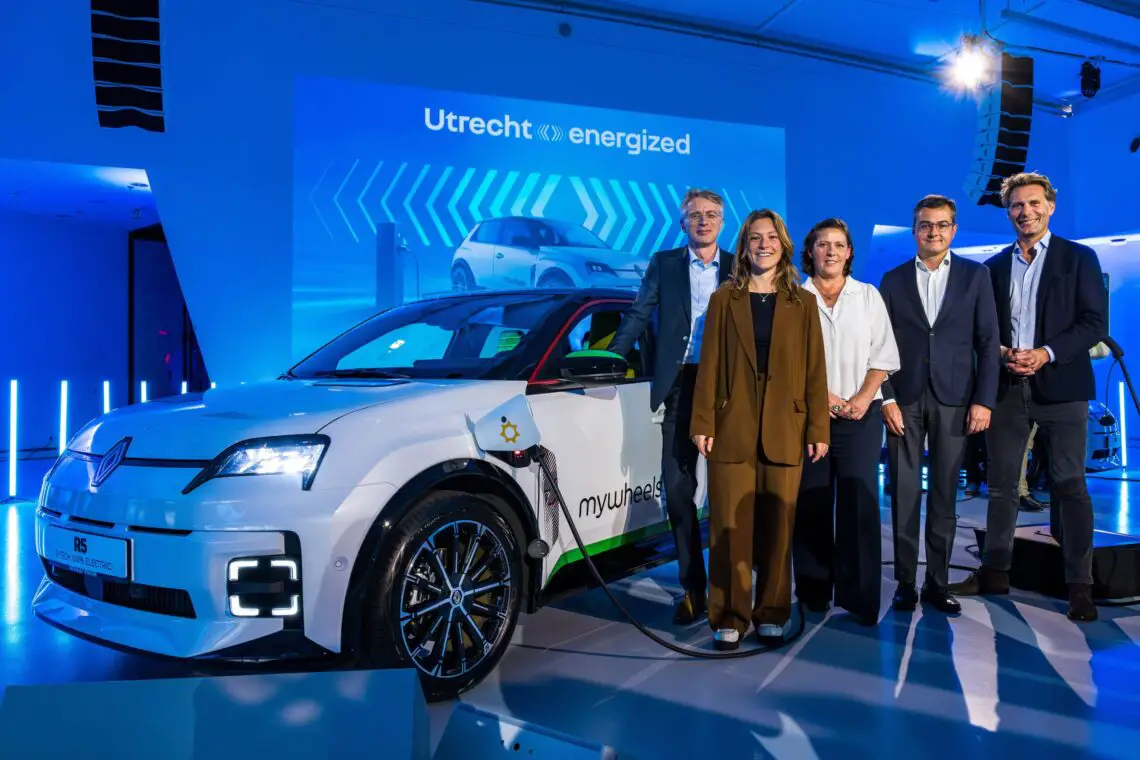
Less parking pressure
Utrecht sees shared cars as essential to the livability of the city. They reduce parking pressure and the number of private cars, while at the same time – thanks to V2G technology – playing an active role in the energy transition. Alderman Eva Oosters (Emission Free Transport): “With this technological innovation, we are taking a big step towards a city in which cars not only drive on solar energy, but also give that energy back to the neighborhood. This will also help us deal with grid congestion problems. This is crucial – because a reliable energy grid is the backbone of our climate ambitions as well as the further development of the city, such as the construction of new housing.
Example for Europe
Renault Group is calling for clear and consistent regulations across Europe, including tax incentives, revision of network charges and simplified certification procedures. Jérôme Faton, Mobilize Energy director: “To realize the full potential of V2G, we need to remove existing barriers – from adjusting tax rules and network costs to promoting international operability and simplifying certification processes. With the right alignment, V2G can become a cornerstone of the energy grid of the future.”

